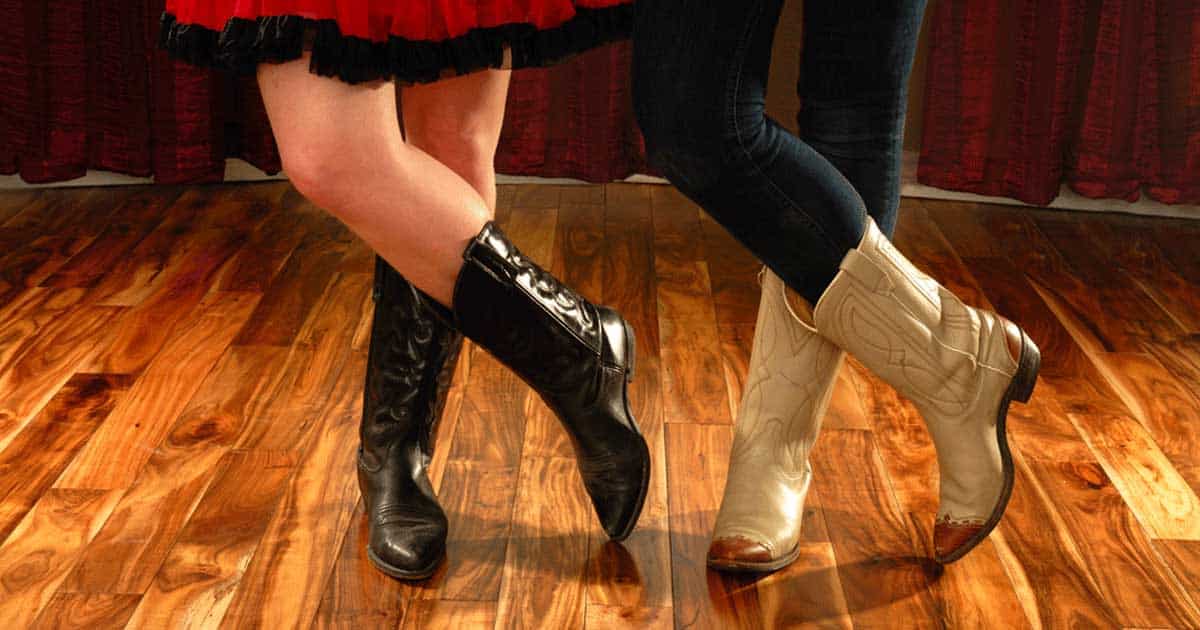Line dance is always a fun and non-stressful way to get everyone onto the dance floor. It’s easy to get and follow through, and doing it with other people makes it even more entertaining. If you’re not familiar with the dance, it’s basically what its name implies: people dancing to music while in a line.
So, if you’re interested in starting out and learning line dance, then here’s a beginner’s guide of everything you need to know about it.
How Does Line Dancing Work?
RELATED: 10 Best Line Dance Songs That Makes You Get on the Dance Floor
In a longer and more detailed description, line dancing is a choreography with a repeated sequence of steps performed in unison by a group of people who are arranged in lines or rows. All of the dancers will face the same direction and will perform all of the steps at the same time. The basic skills needed for this kind of dance is memorization of steps and counting rhythms.
There are different levels in line dancing: Beginner, Improver, Intermediate, and Advanced. But note that it is the content of the choreography that determines the level of a dance and not the experience or ability of a dancer.
As the level increases, step patterns will be more complicated, and more different combinations will be introduced. A range of turns, direction changes, varied rhythm counts will also be featured and will require good technique and coordination.
Quick Guide on How to Line Dance for Beginners
For beginners, the choreography is designed to suit individuals who have no previous dance experience. It is at this level that dancers are introduced to the basic steps and rhythm counts, correct dance terminologies, and dance floor etiquettes. The routines are composed of short sequences of easy steps at a moderate pace, usually a 4/4 beat or ¾ beat so that it’s easy to follow. Ideally, the routine would have no more than 16 counts.
Usually, instructors put new students in the middle of the group so that they will always have support. You will be first taught the basics as mentioned above before starting and incorporating them into a dance.
For beginners, there are a number of easy dances to familiarize with, like The Electric Slide, The Cha-Cha Slide, and of course the famous Boot Scootin’ Boogie. When you have mastered those, you can also try the following:
- Cotton-Eyed Joe
- Chicken Dance
- Hokey Pokey
- Macarena
- The Hustle
- Hoedown Throwdown
Most Common Beginner Line Dance Terminologies
READ MORE: Top 10 Country Dance Party Songs for Non-stop Dancing
It is very important for anyone who is trying to learn line dance to be familiar with the common terms. This way, the individual will be able to effectively follow through instructions.
- & – a half beat step that either precedes (&1) or follows (1&) the beat
- & (and) step – signifies change with a movement
- AST – or also known as ‘At the Same Time’ meaning doing movements simultaneously 2.2. Kick and Clap Hands AST
- Ball Change – changing weight from the ball of one foot to the other
- Brush – swinging the foot forward then lightly touching the floor with the ball of the foot
- CW/CCW – clockwise or counterclockwise movement on the floor
- Close – bringing feet together without any change in weight
- Diagonal – 45 degrees out from the center
- Dig – touching the ball, toe, or heel of the free foot to the floor with a strong emphasis
- Fan – swinging the toe out with the heel on the floor and vice-versa
- Freeze – indicates a stop or no movement
- Hold – one beat pause on the last stepping foot before taking another step
- Hop – a spring into the air using one foot and landing on the same foot
- Jump – a spring into the air using both feet and landing on both feet
- Lock Step – stepping forward using one foot then sliding the other foot up and ‘locking’ ankles behind the first foot
- Lunge – transferring weight to a bent leg while the other leg is extended
- O’clock – used to denote direction of turn or travel
- Pivot – with the weight on one foot, place the other forward, and then turning on the balls of either one or both feet in the required direction
- Point – pointing the free foot without touching the floor
- Scoot – hopping or sliding with one foot raised
- Shuffle – three steps taken to two beats of music
- Slap – slapping the opposite foot or knee
- Spin – a 360 degree turn
- Together – move free foot next to the opposite foot
- Twist – with feet together, move the hells in required direction puting the weight on the balls of the feet
- X – indicates the number of times a move should be done
Tips for Beginners
Here are some tips for beginners just like you to make learning line dancing easier and more enjoyable.
- Be patient! Everybody has their own pace in learning, and if you think you’re learning behind, that’s okay. You can’t expect to be good at something without putting in the long hours and effort. And how quickly you learn will not measure how great you could be in months or years.
- Practice makes perfect. Just like in any dance, you have to practice to develop familiarity and boost your confidence.
- Don’t be afraid to ask for help. If you’re having any trouble with a particular step or you can’t pick up the dance, ask the instructor. They’re there not only to teach but to also guide you along the way.
- Wear proper footwear. Make sure you are comfortable with your shoes so that you can move around with ease. For beginners, a leather soled footwear is best-recommended for line dance.


















